Silk, prized for its luxurious texture and sheen, demands special care regarding stain removal. Accidents happen, and knowing how to address common culprits like grease, oil, ink, and blood is essential to preserve the delicate fabric’s beauty.
Each type of stain requires a tailored approach, balancing effectiveness with the utmost gentleness. Swift action is crucial, as time can be an adversary in stain removal from silk.
With the right techniques and a careful touch, restoring silk to its pristine elegance is possible. This guide provides detailed steps to navigate the intricacies of stain removal from this cherished material.
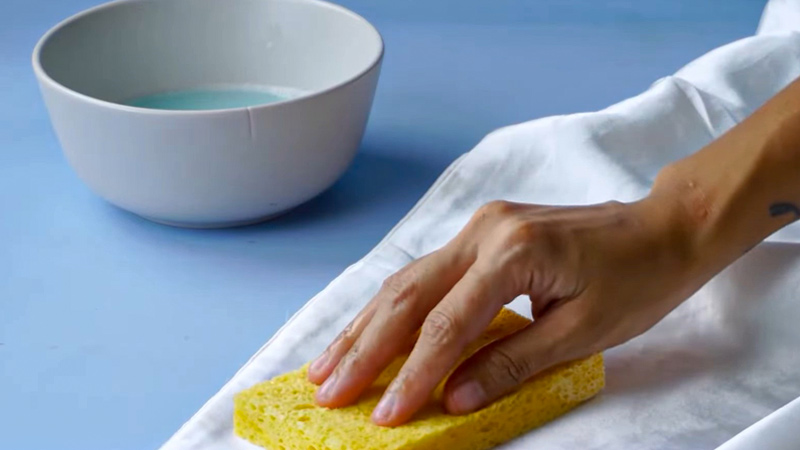
How Do I Get a Stain Out of Silk?
Getting a stain out of silk can be a delicate process, as silk is a sensitive and luxurious fabric. Approaching the stain carefully is essential to avoid further damaging the material.
Here’s a step-by-step guide to help you remove a stain from silk:
Materials You’ll Need:
- Clean White Cloth or Paper Towels.
- Mild Detergent or Silk-Specific Cleaner.
- Cold Water.
- Distilled White Vinegar.
- Absorbent Powder.
Step-by-Step Process:
Act Quickly
Time is of the essence when it comes to removing stains from silk. The longer a stain sits, the more it can penetrate the delicate fibers of the fabric, making it harder to remove. As soon as you notice a stain, take action promptly.
Identify the Stain
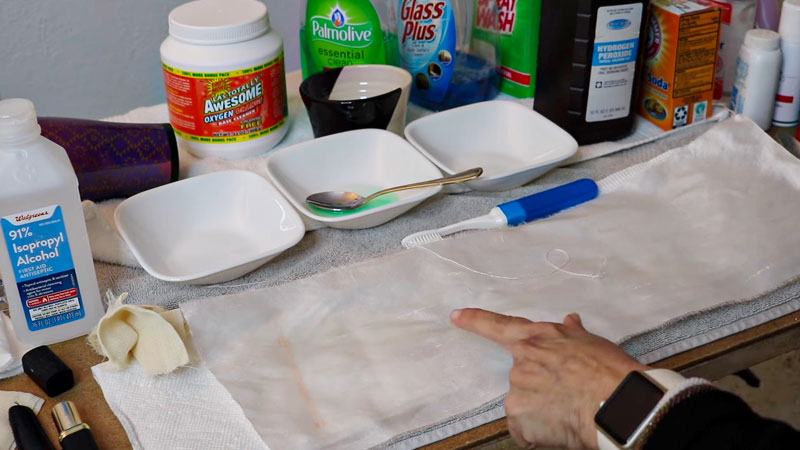
Understanding the nature of the stain is crucial for effective removal. Different stains require specific treatments.
For instance, oil-based stains like makeup or salad dressing will need a different approach than water-based stains like coffee or wine. Identifying the stain type will guide you toward the most appropriate cleaning method.
Blot, Don’t Rub

When dealing with a fresh stain, resist the urge to rub the affected area vigorously. Silk fibers are incredibly delicate and can be easily damaged.
Instead, gently blot the stain using a clean, white cloth or paper towel. This helps to absorb the stain without spreading it further.
Test in an Inconspicuous Area
Before applying any cleaning solution, it’s imperative to test it on an inconspicuous area of the silk garment.
This precaution ensures that the cleaning agent won’t cause discoloration or damage to the fabric. Choose an area that is typically not visible, such as an inside seam or hem.
Use a Gentle Detergent
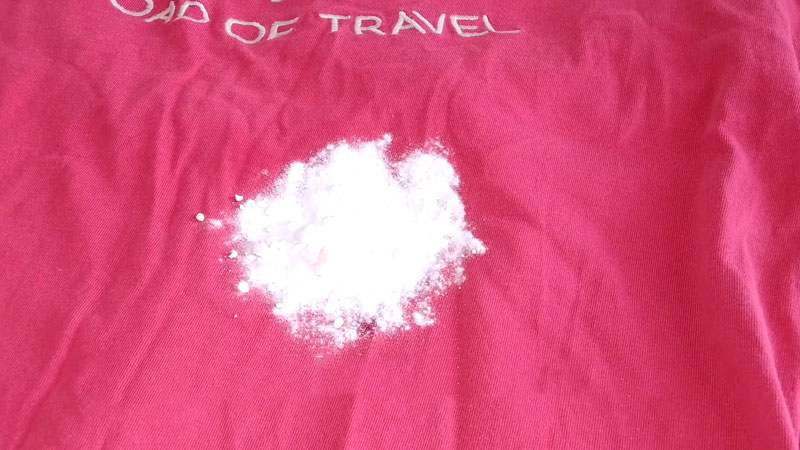
For water-based stains, mix a mild detergent designed for delicate fabrics with cold water. Dip a clean cloth into the soapy water and gently dab the stain.
Begin at the outer edges of the stain and work towards the center. Rinse the area thoroughly with cold water to remove any residual detergent.
Protein-Based Stains
It’s best to act swiftly when faced with protein-based stains like blood. Begin by soaking the stained area in cold water for about 30 minutes. This helps to loosen the proteins from the fabric. Gently rub the fabric together or use a soft brush to work on the stain further. Rinse with cold water and repeat the process if necessary.
Avoid Heat
It’s crucial to steer clear of heat throughout the stain removal process. Hot water or high temperatures can set the stain, making removing it even more challenging. Stick to cold water, which is gentle on silk fibers.
Professional Cleaning

If the stain persists after your initial attempts, it’s wise to seek the expertise of a professional dry cleaner experienced in handling delicate fabrics like silk. Communicate the type of stain and your previous efforts to remove it.
Their specialized knowledge and equipment can often achieve successful results.
Removing Grease Stains from Silk
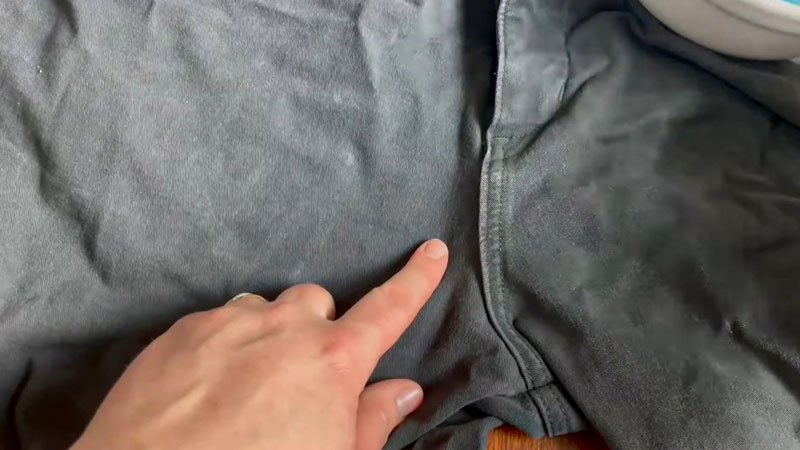
Removing grease stains from silk can be particularly challenging due to the fabric’s delicate nature. However, you can effectively remove grease stains from silk with patience and the right approach.
Here’s a step-by-step guide:
Supplies you’ll need:
- Cornstarch or talcum powder
- Clean, white cloth or paper towels
- Mild liquid detergent for delicate fabrics
- Cold water
- An old, soft toothbrush or a soft-bristle brush
- White vinegar
- Dry cleaning solvent
Act Quickly
Time is of the essence when dealing with grease stains on silk. Grease can quickly seep into the delicate fibers, making removing them more challenging. The sooner you address the stain, the better your chance of successful removal.
Blot and Absorb
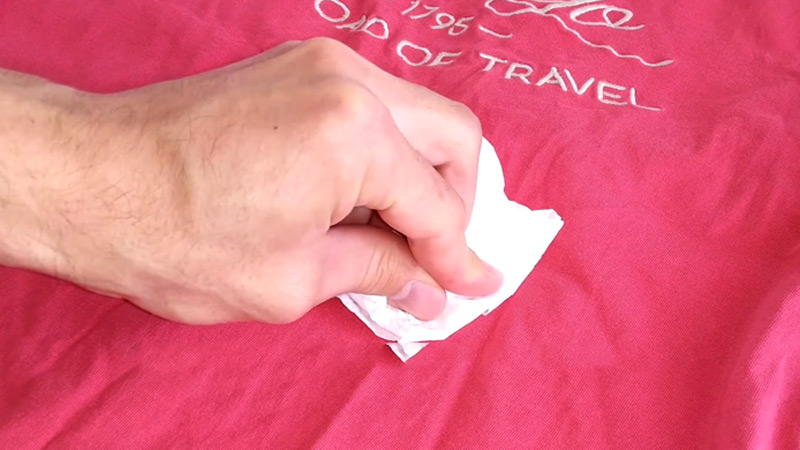
Blot the grease stain with a clean, dry, white cloth or paper towel. Apply light pressure to absorb as much of the grease as possible. Avoid rubbing, as this can push the grease further into the fabric.
Apply Cornstarch
Liberally sprinkle cornstarch or talcum powder onto the grease stain. These powders work by absorbing the remaining grease. Allow them to sit for at least 15-30 minutes to give them ample time to soak up the oil.
Brush Away Powder
After the powder has had time to work, use a soft, clean brush (like an old toothbrush or a soft-bristle brush) to brush away the excess powder gently.
Be careful not to apply too much pressure to avoid damaging the delicate silk fibers.
Pre-treat With Detergent
Create a mixture of mild liquid detergent and cold water. Dip a clean, white cloth into this soapy solution and gently blot the stain.
Begin at the outer edges of the stain and work your way towards the center. This helps to break down any remaining grease.
Rinse with cold water.
Thoroughly rinse the treated area with cold water to remove the detergent and residual grease. Use a gentle stream of water to avoid putting too much pressure on the silk fabric.
Check the stain
Examine the stain to see if it has disappeared. If any trace of the grease remains, repeat steps 4 through 7 until the stain is completely gone.
Vinegar Solution
When the grease stain persists, you can try applying a mixture of one part white vinegar to two parts water to the stained area.
Blot with a clean cloth, rinse with cold water and let it air dry. However, exercise caution, as vinegar can be acidic and affect the silk’s color or texture.
Professional Cleaning
If all else fails, or if you’re uncertain about further home remedies, it’s advisable to seek the expertise of a professional dry cleaner who is experienced in handling delicate fabrics like silk. Be sure to inform them about the grease stain and the steps you’ve already taken.
Getting Oil Stains Out of Silk
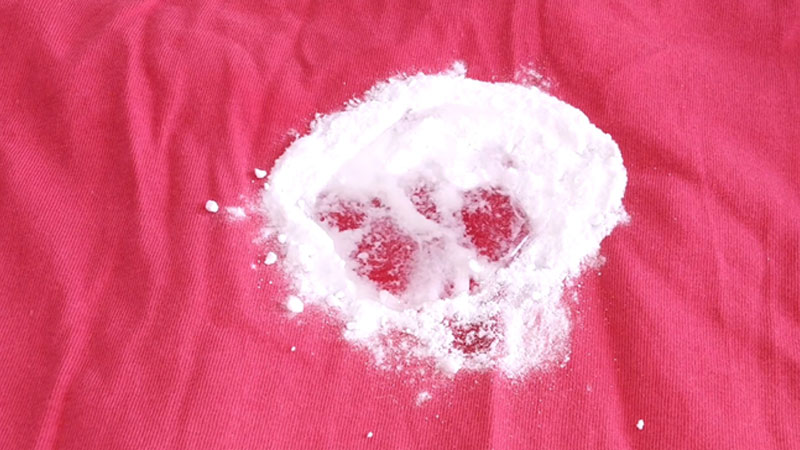
Removing oil stains from silk can be a bit challenging due to the fabric’s delicate nature. However, with the right approach and patience, you can often successfully get oil stains out of silk.
Here’s a detailed guide:
Supplies you’ll need:
- Cornstarch or talcum powder
- Clean, white cloth or paper towels
- Mild liquid detergent for delicate fabrics
- Cold water
- An old, soft toothbrush or a soft-bristle brush
- White vinegar
- Dry cleaning solvent
Act Quickly
Swift action is crucial when dealing with oil stains on silk. Oil can quickly permeate the delicate fibers, making removing them more challenging. The sooner you address the stain, the better your chance of successful removal.
Blot and Absorb
Blot the oil stain with a clean, dry, white cloth or paper towel. Apply light pressure to absorb as much of the oil as possible. Avoid rubbing, as this can push the oil further into the fabric.
Apply Talcum Powder
Generously sprinkle cornstarch or talcum powder onto the oil stain. These powders work by encapsulating the oil, making it easier to remove. Allow them to sit for at least 15-30 minutes to give them ample time to work.
Brush Away Powder
After the powder has had time to work, gently use a soft, clean brush (like an old toothbrush or a soft-bristle brush) to remove the excess powder.
Be careful not to apply too much pressure to avoid damaging the delicate silk fibers.
Pre-treat With Detergent
Create a mixture of mild liquid detergent and cold water. Dip a clean, white cloth into this soapy solution and gently blot the stain.
Begin at the outer edges of the stain and work your way towards the center. This helps to break down any remaining oil.
Rinse With Cold Water
Thoroughly rinse the treated area with cold water to remove the detergent and residual oil. Use a gentle stream of water to avoid putting too much pressure on the silk fabric.
Check the Stain
Examine the stain to see if it has disappeared. If any trace of the oil remains, repeat steps 4 through 7 until the stain is completely gone.
Vinegar Solution
If the oil stain persists, you can try applying a mixture of one part white vinegar to two parts water to the stained area.
Blot with a clean cloth, rinse with cold water and let it air dry. However, exercise caution, as vinegar can be acidic and affect the silk’s color or texture.
Professional Cleaning
If all else fails, or if you’re uncertain about further home remedies, it’s advisable to seek the expertise of a professional dry cleaner who is experienced in handling delicate fabrics like silk.
Be sure to inform them about the oil stain and the steps you’ve already taken.
Removing Ink Stains from Silk
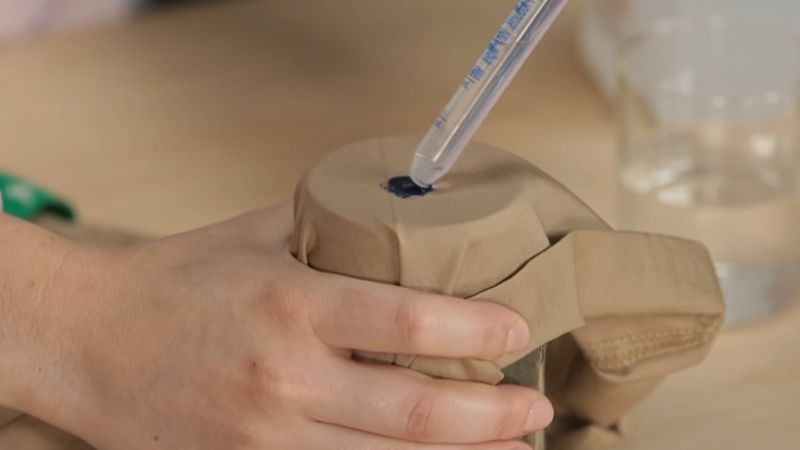
Removing ink stains from silk can be challenging, but with careful and gentle techniques, it’s possible to achieve success.
Here’s a step-by-step guide on how to get ink stains out of silk:
Supplies you’ll need:
- Rubbing alcohol or hand sanitizer
- Clean, white cloth or cotton ball
- Mild liquid detergent for delicate fabrics
- Cold water
- A soft brush or old toothbrush
Steps:
Act Quickly
The key to successful ink stain removal is acting promptly. The longer the ink sits, the more it can penetrate the fabric, making it harder to remove.
Test a Small Area
Before applying any cleaning agent, test it on an inconspicuous silk area to ensure it doesn’t cause any damage or discoloration.
Blot, Don’t Rub
Place a clean, white cloth or cotton ball under the stained area to prevent the ink from spreading. Gently blot the stain with a cloth or cotton ball. Avoid rubbing, as this can push the ink deeply into the fabric.
Apply Rubbing Alcohol
Moisten a clean cloth or cotton ball with rubbing alcohol or hand sanitizer. Blot the stain gently, starting from the outside and moving towards the center. The alcohol helps dissolve the ink.
Rinse With Cold Water
After treating the stained area with rubbing alcohol, rinse it with cold water. This helps remove both the ink and any residual alcohol.
Pre-treat With Mild Detergent
Mix a small amount of mild liquid detergent designed for delicate fabrics with cold water. Dip a clean cloth into this soapy mixture and gently blot the stain, working from the outside edges towards the center.
Rinse Again
Thoroughly rinse the treated area with cold water to remove the detergent and any remaining ink residue.
Check the Stain
Examine the stain to see if it has disappeared. If any trace of the ink remains, repeat steps 2 through 6 until the stain is gone.
Final Rinse and Air Dry
Once the stain is gone, give the entire silk garment a final rinse with cold water to remove any remaining cleaning agents. Press the fabric between clean, white towels to remove excess water, then lay it flat to air dry.
Dealing with Blood Stains on Silk
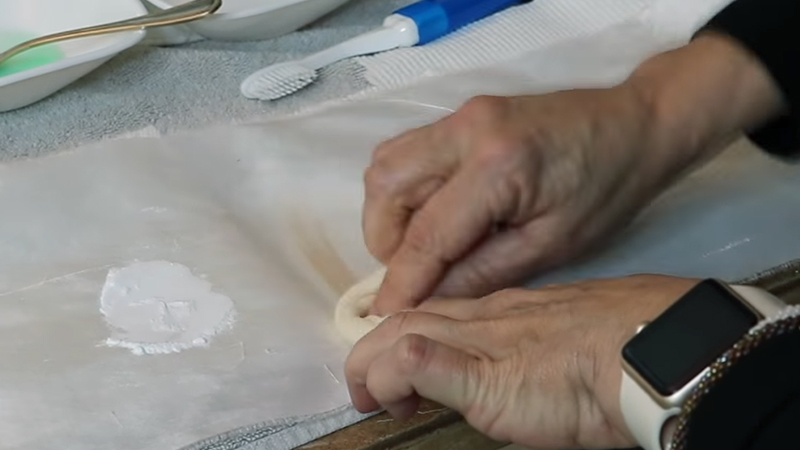
Removing blood stains from silk requires a gentle and careful approach to avoid damaging the delicate fabric.
Here’s a step-by-step guide on how to get blood stains out of silk:
Supplies you’ll need:
- Cold water
- Mild liquid detergent for delicate fabrics
- Clean, white cloth or paper towels
- A soft brush or old toothbrush
Steps:
Act Immediately
Time is crucial when dealing with blood stains on silk. Fresh stains are generally easier to remove, as they haven’t had a chance to set into the fabric.
Avoid Hot Water
Using cold water is crucial when dealing with blood stains. Hot water can cause the proteins in the blood to set, making the stain more difficult to remove.
Blot, Don’t Rub
Gently blotting the stain with a clean, white cloth or paper towel is essential. This helps absorb as much blood as possible without spreading it further into the fabric.
Soak in Cold Water
Submerging the stained area in a sink filled with cold water allows the fabric to absorb moisture and loosen the blood particles.
Gently Agitate the Fabric
Working the fabric around the stain with your fingers or a soft brush helps release the blood from the silk fibers.
Rinse With Cold Water
Thoroughly rinsing the stained area with cold water helps remove any loosened blood particles. Be sure to use a gentle stream of water to avoid putting too much pressure on the delicate fabric.
Pre-treat With Mild Detergent
Mixing mild liquid detergent with cold water creates a gentle cleaning solution for the silk. Blotting the stain with this mixture helps break down any remaining blood.
Rinse Again
Ensuring all detergent and blood residue is completely removed is crucial to prevent any potential damage to the silk.
Check the Stain
After each round of treatment, carefully inspect the stain to assess the progress. If any traces of the blood remain, repeat the process.
Final Rinse and Air Dry
A final rinse with cold water removes any remaining cleaning agents. Pressing the fabric between clean, white towels helps remove excess water before allowing the silk garment to air dry flat.
Precautions and Tips
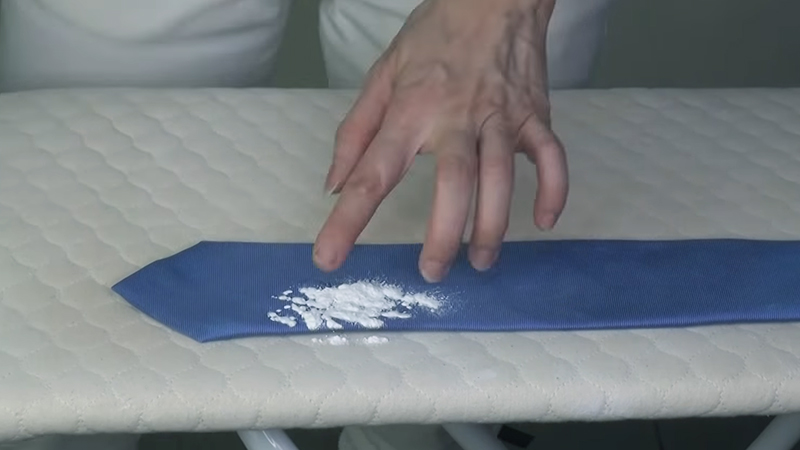
When dealing with delicate fabrics like silk, you must take extra precautions to ensure you don’t inadvertently damage or worsen the stains.
Here are some essential precautions and tips:
Precautions
- Test in an inconspicuous area: Before applying any cleaning agent or method, always test it on a small, hidden area of the silk garment to ensure it doesn’t cause any damage or discoloration.
- Avoid hot water and heat: Stick to cold water throughout the stain removal. Hot water can set stains and damage the delicate silk fibers.
- Be gentle: Silk is a sensitive fabric, so avoid vigorous rubbing, scrubbing, or wringing. Use a light touch, especially when blotting and brushing.
- Use clean, white materials: When blotting or applying cleaning agents, always use clean, white cloths, paper towels, or cotton balls. Colored fabrics can transfer dye onto the silk.
- Blot, don’t rub: Always blot the fabric gently, whether it’s absorbing excess liquid or applying a cleaning solution. Rubbing can push stains more deeply into the fibers.
- Work from the outside in: When treating stains, start at the outer edges and work towards the center. This helps prevent the stain from spreading.
- Avoid harsh chemicals: Stick to mild, pH-neutral detergents specifically designed for delicate fabrics. Avoid using bleach, harsh solvents, or robust alkaline solutions.
- Air dry flat: Avoid wringing or twisting the silk after treating a stain. Instead, gently press it between clean, white towels to remove excess water, then lay it flat to air dry.
Tips
- Act quickly: The sooner you address a stain, the better your chances of successful removal. Fresh stains are generally easier to treat.
- Patience is vital: Stain removal from silk can take time and may require multiple attempts. Don’t rush the process; allow each step to work before moving on to the next.
- Know the stain type: Different stains require different removal methods. Identifying the type of stain will help you choose the appropriate cleaning approach.
- Professional help: If you’re unsure about any step or the stain persists, seek advice from a professional dry cleaner experienced in handling delicate fabrics like silk.
- Prevent future stains: Consider using a silk-friendly stain repellent or wearing an apron when engaging in activities that may pose a risk to the fabric.
FAQs
How can I remove a grease stain from silk?
To remove a grease stain from silk, start by blotting excess grease. Apply cornstarch or talcum powder to absorb the remaining oil.
What’s the best way to get an oil stain out of silk?
Begin by blotting the oil stain. Apply cornstarch or talcum powder to absorb the oil, then brush away the powder.
How do I tackle an ink stain on silk?
Act promptly by blotting the ink stain. Apply rubbing alcohol or hand sanitizer and blot gently. Pre-treat with mild detergent, rinse with cold water, and repeat if needed. Avoid hot water.
What’s the process for removing a blood stain from silk?
Start by blotting the blood stain with a clean cloth. Soak the stained area in cold water for 30 minutes.
Can I use hot water to remove stains from silk?
No, avoiding hot water when dealing with silk stains is essential. Hot water can set the stain, making it more difficult to remove.
Wrap Up
Stain removal demands a delicate touch and swift action in caring for silk. Addressing stains promptly is vital, as silk’s sensitivity requires gentle treatment. Each type necessitates a tailored approach, whether it’s grease, oil, ink, or blood.
Employing everyday household items like cornstarch, rubbing alcohol, and mild detergents proves effective.
Remember to avoid hot water, as it can set stains. Patience is paramount; multiple attempts may be required. Always test any cleaning method in an inconspicuous spot. Should uncertainty persist, professional assistance is advisable.
With care and attentiveness, successful stain removal from silk can be achieved, preserving the fabric’s elegance and longevity.
Leave a Reply